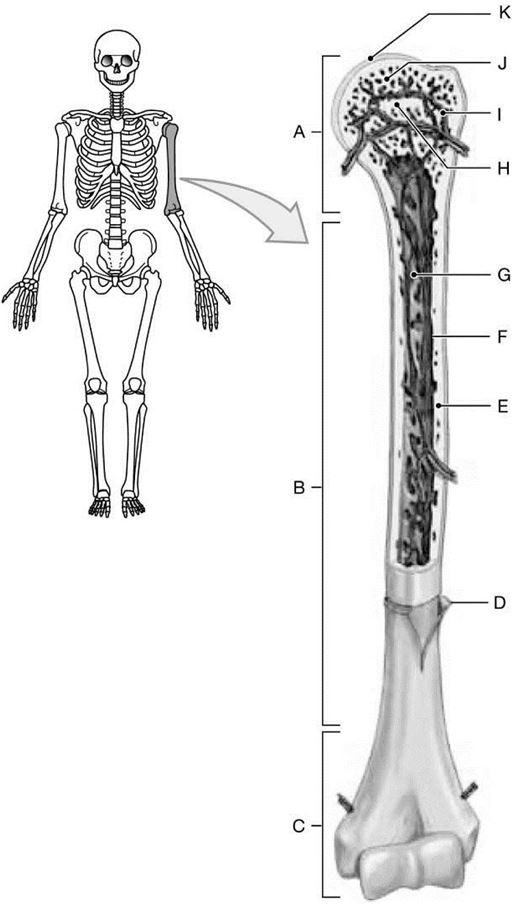If all other conditions remain the same and the concentration of a nonpenetrating solute increases inside a cell, which is most likely to occur?
A. Water will tend to enter the cell because the interior has an increased osmolarity.
B. Water will tend to leave the cell because the interior has an increased osmolarity.
C. Water will tend to enter the cell because the interior has a decreased osmolarity.
D. Water will tend to leave the cell because the interior has a decreased osmolarity.
E. The solute will diffuse across the membrane until its concentration is equal on both sides of the membrane.
A
You might also like to view...
Structure H is the

A) marrow cavity.
B) osteon.
C) lamellae.
D) epiphyseal line.
E) lacuna.
In the male, which muscle ejects urine or semen, compresses the base of the penis, and helps in formation of an erection?
A. External urethral sphincter B. Superficial transverse perineal muscle C. Pubococcygeus D. Bulbospongiosus E. Iliococcygeus
If 5 reproductive cells divide by meiosis, the total number of gametes produced in a male would be ________. The total number of gametes produced in a female would be ________.
A. 10; 5 B. 20; 20 C. 20; 10 D. 20; 5
The clear gel that usually surrounds cells is called interstitial fluid
Indicate whether the statement is true or false